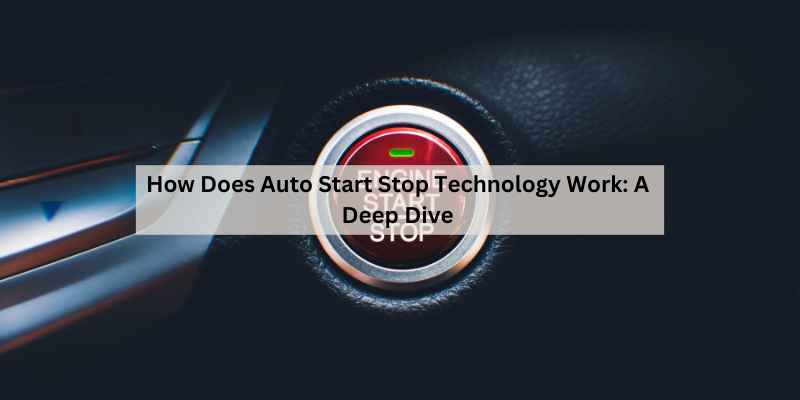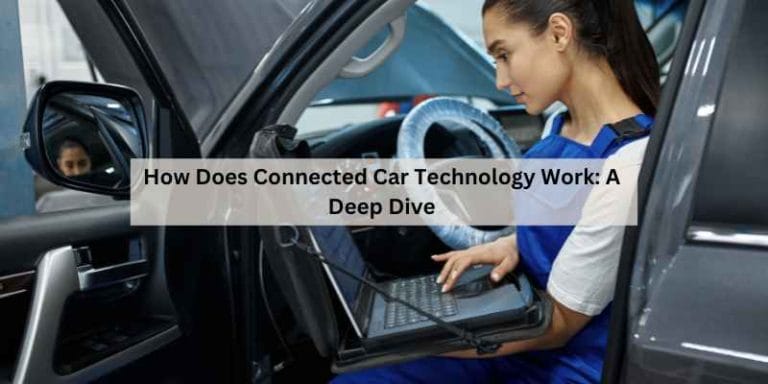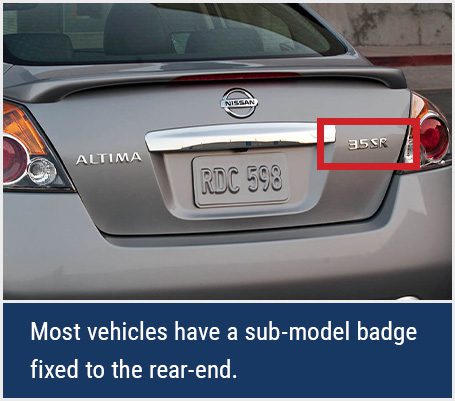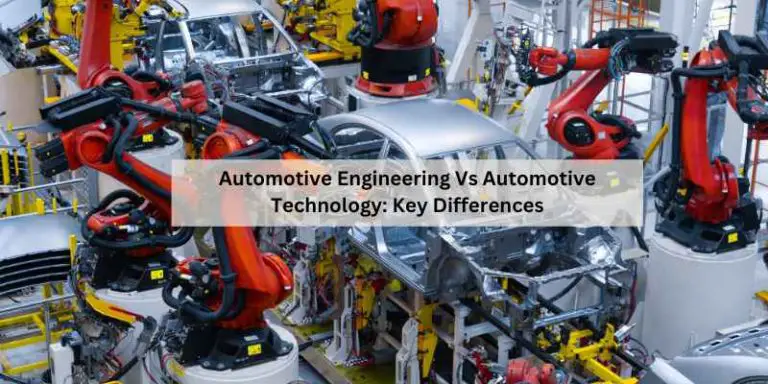How Does Auto Start Stop Technology Work: A Deep Dive
Auto Start Stop technology is a feature in modern cars that automatically turns off the engine when the vehicle comes to a stop and restarts it when the driver releases the brake pedal. This technology helps to save fuel and reduce emissions by eliminating unnecessary engine idling.
When the vehicle comes to a stop, sensors detect that the engine can be safely turned off. The system then shuts down the engine, while still allowing essential functions like steering and braking to remain operational. When the driver releases the brake pedal, the system quickly restarts the engine, allowing the vehicle to resume normal operation.
This technology is designed to improve fuel efficiency and decrease environmental impact.
Introduction To Auto Start Stop Technology
Auto Start Stop technology is a feature in modern cars that automatically turns off the engine when the vehicle comes to a stop and restarts it when the driver releases the brake or engages the clutch. The system aims to reduce fuel consumption and emissions by eliminating engine idling. Initially introduced in hybrid vehicles, the technology has evolved to be incorporated into conventional internal combustion engine cars as well.
The fundamental principle behind start-stop functionality lies in the system’s ability to monitor various vehicle parameters such as speed, brake pedal status, and battery charge. When the vehicle comes to a halt, the system shuts off the engine to prevent unnecessary fuel consumption and emissions. Upon releasing the brake pedal or engaging the clutch, the system swiftly restarts the engine, allowing the driver to resume driving seamlessly.
Key Components Of Start Stop Systems
The Auto Start Stop Technology in modern cars is a system that automatically shuts off the engine when the vehicle comes to a stop and restarts it when the driver releases the brake pedal. The key components of this system include the special batteries and voltage management. These special batteries are designed to handle the frequent start-stop cycles and provide the necessary power for the vehicle’s electrical systems. Voltage management ensures that the electrical system maintains a stable voltage during engine restarts, preventing any disruptions to the vehicle’s electronics. This technology helps in reducing fuel consumption and emissions, especially in urban driving conditions where there are frequent stops and idling.
Mechanics Behind The Technology
Auto Start-Stop technology works by automatically shutting off the engine when the car comes to a stop, such as at a traffic light, and then quickly restarting it when the driver lifts their foot off the brake. This helps to reduce fuel consumption and emissions, making it an efficient feature in modern cars.
| Engine Restart Mechanism |
| Auto start-stop technology is designed to reduce fuel consumption and emissions by automatically turning off the engine when the car is stationary and restarting it when the driver releases the brake pedal. The engine restarts quickly and smoothly thanks to a specially designed starter motor and battery system. The starter motor is more powerful than those found in traditional cars, and the battery is specially designed to handle the frequent start-stop cycles. When the driver releases the brake pedal, the engine is restarted by the starter motor in a fraction of a second. |
| Transmission Adjustments for Smooth Operation |
| Auto start-stop technology also requires adjustments to the car’s transmission to ensure smooth operation. When the engine is stopped, the transmission is put into neutral to prevent the car from stalling. When the driver releases the brake pedal, the transmission is quickly shifted back into gear to ensure a smooth start. In addition, some cars may have a more advanced transmission system that can predict when the engine will be restarted and pre-select the appropriate gear for a smoother and quicker start. |
Start Stop In Action
Auto Start Stop technology in modern cars is designed to automatically shut off the engine when the vehicle comes to a stop, such as at a traffic light or in traffic jams. This is to save fuel and reduce emissions. When the driver releases the brake or depresses the clutch, the engine restarts. The system relies on various sensors to detect when the vehicle is stationary and when the driver is ready to move again. Despite its benefits, some drivers find the frequent engine shutdowns and restarts to be annoying, and many systems offer the option to disable it temporarily or permanently.
Energy Conservation And Efficiency
Auto Start Stop technology in modern cars is a feature that automatically turns off the engine when the vehicle is stationary, such as at a traffic light, and then restarts it when the driver releases the brake pedal. This technology helps to conserve energy and improve fuel efficiency by reducing unnecessary idling time.
| Fuel Savings Explained | Impact on Vehicle Emissions |
|---|---|
| Auto start-stop technology can save fuel by shutting down the engine when the car comes to a stop and restarting it when the driver releases the brake. This feature can save up to 10% fuel in heavy traffic, making it an efficient way to conserve energy. | The reduction in fuel consumption due to auto start-stop technology also leads to a decrease in vehicle emissions, making it an eco-friendly feature. The system can reduce carbon dioxide emissions by up to 5%, making it an efficient way to reduce the environmental impact of driving. |
Challenges And Solutions
Auto Start Stop technology is a feature in modern cars that automatically shuts off the engine when the vehicle comes to a stop, such as at a traffic light, and then restarts it when the driver releases the brake pedal.
This helps to save fuel and reduce emissions. The system is triggered by the actuation of the brake alone and requires powerful components to function properly. However, the downside is that the replacement components can be expensive.
| Challenges and Solutions |
|
Auto start-stop technology is becoming increasingly popular in modern cars because it helps to save fuel and reduce emissions. However, there are still some challenges that need to be addressed. One of the major concerns is the reliability of the system. While the lifespan of the components used in auto start-stop technology should not be shorter than those in a regular car, they can be more expensive to replace. Another challenge is the handling of HVAC demands. Auto start-stop systems require modifications to the HVAC system to ensure that the cabin remains comfortable during engine stop times. The system also requires a deep-cycle battery to handle the frequent starts and stops. Despite these challenges, auto start-stop technology remains a viable solution for reducing fuel consumption and emissions in modern cars.
Electronics And Software
Auto start-stop technology is a system that automatically shuts off the engine when the vehicle comes to a stop and restarts it when the driver releases the brake pedal. This process is managed by electronics and software integrated with the vehicle’s onboard computer.
The start-stop system logic involves sensors that detect when the vehicle is stationary, the brake pedal is engaged, and other factors that indicate the engine can be safely turned off. This information is processed by the vehicle’s onboard computer, which then commands the engine to shut down and later restart when necessary.
Consumer Insights
Consumer Insights provide valuable information on how Auto Start Stop Technology works in modern cars. This technology helps save fuel by automatically stopping the engine when the vehicle is idle and restarting it when the driver releases the brake pedal.
It requires powerful components and deep-cycle batteries, but can result in fuel savings, although it may have a higher cost for replacement components.
Beyond The Basics
Auto Start-Stop technology works by automatically shutting off the engine when the vehicle comes to a stop and restarting it when the driver releases the brake pedal. The system relies on advanced sensors to detect when the car is stationary and when to engage the start-stop function. Additionally, it incorporates features such as voltage management, special batteries, and HVAC modifications to optimize performance. In terms of disabling the feature, drivers may have the option to turn it off, although this could have implications on fuel efficiency and environmental impact. Looking ahead, future developments in this technology aim to further enhance its efficiency and effectiveness.
Frequently Asked Questions
What Is The Downside To The Start-stop Engine Feature?
The downside to the start-stop engine feature is the cost of replacement components, which can be expensive. Stop-start technology requires powerful components that may be more expensive than those in a regular car. While the lifespan of these components shouldn’t be shorter, their replacement can be costly.
What Triggers Auto Start-stop?
The auto start-stop feature in vehicles with automatic or dual clutch transmissions is triggered when the driver applies the brake and brings the vehicle to a standstill. If the driver’s foot remains on the brake pedal, the system will automatically stop the engine.
This technology helps save fuel by reducing idling time. However, it may require powerful components and can be more expensive to replace.
Does Auto Start-stop Drain Your Battery?
Auto start-stop technology does not drain your battery. It automatically shuts off the engine when the car is stationary, such as at a red light, and restarts it when you release the brake. The system is designed to be efficient and uses a special battery to handle the frequent starts.
Does Start-stop Technology Really Save Gas?
Yes, Start-Stop technology saves gas by shutting off the engine when the car is stationary. This reduces fuel consumption.
Conclusion
To sum up, auto start-stop technology is a revolutionary feature in modern cars that helps save fuel and reduce emissions. By automatically shutting off the engine when the vehicle comes to a stop and restarting it when the driver releases the brake pedal, this technology improves fuel efficiency and contributes to a greener environment.
Although there may be some downsides, such as the cost of replacement components and potential impact on battery life, the benefits of auto start-stop technology outweigh the drawbacks. So, embrace this innovative feature and enjoy the advantages it brings to your driving experience.







